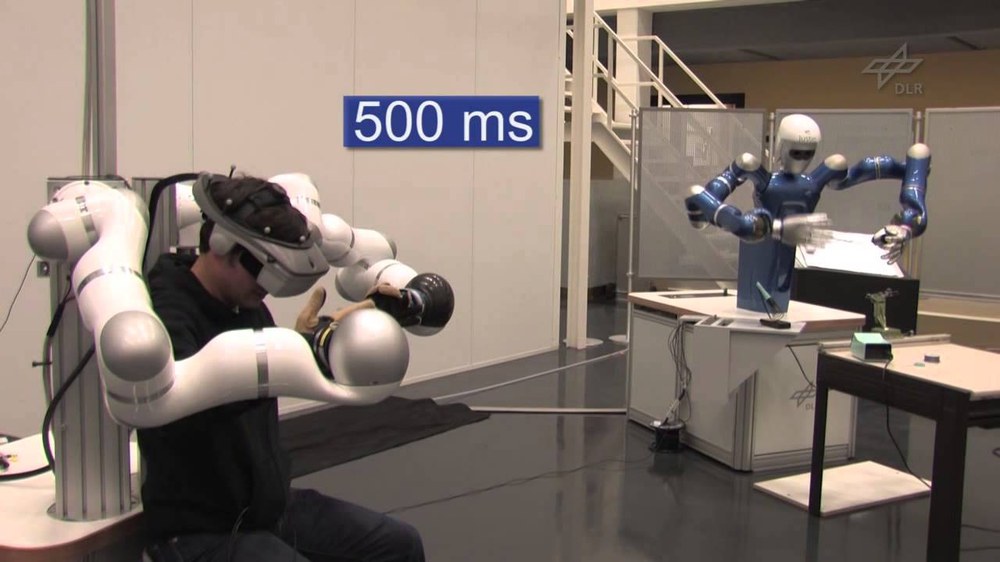Telemanipulation
Telemanipulation of humanoid robot Justin Telemanipulation of mobile robots Telemanipulation with varying time delay and packet loss Multilateral control
How to repair satellites, deep sea mining sites or nuclear plants without endangering humans? By using remotely commanded robots, or telerobotic technology. A human operator can command such a robotic system while being in a safe and comfortable place. Robots can be built to be more robust to hazardous environments making it
One particularity of our approach is haptic feedback, which lets the human operator precisely feel and control the interaction forces between remote robot and the environment leading to a natural manipulation. This feedback enables to cover a wide range of manipulation tasks, from powerfully switching levers to precisely turning screws, or even handling fragile electronics parts. We started with On-Orbit Servicing as target application, but the developed technology can and is also be applied to various terrestrial applications, such as maintaining industrial plants, oil platforms or minimally invasive robotic surgery.

The Telepresence and Virtual Reality Lab - Robotics and Mechatronics Center, DLR
Your consent to the storage of data ('cookies') is required for the playback of this video on Youtube.com. You can view and change your current data storage settings at any time under privacy.
